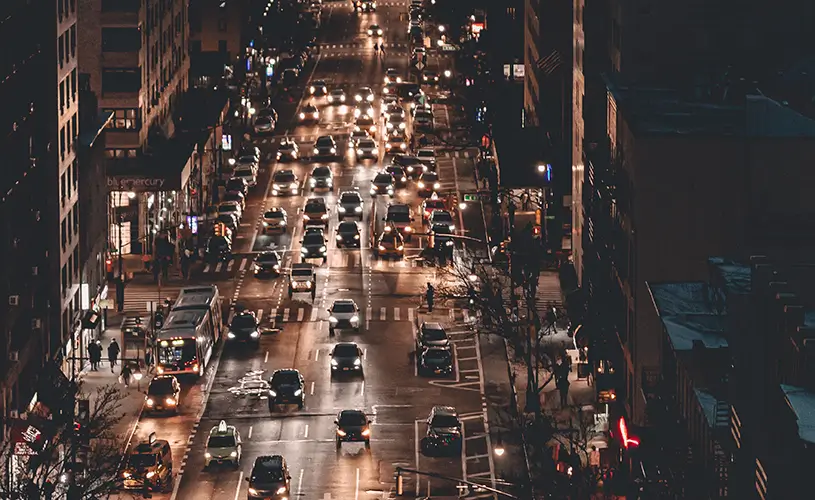New York City, often referred to as “The Big Apple,” is a bustling metropolis known for its iconic skyline, diverse neighborhoods, and vibrant culture. While it’s a city of dreams and endless opportunities, it’s also infamous for something less enchanting: its traffic. If you’ve ever attempted to navigate the city’s intricate streets, you know it’s no easy feat. So, let’s delve into the intricate web of New York City’s traffic patterns.
The Grid System: The Backbone of NYC
New York City’s streets are meticulously organized into a grid system, a defining feature that sets it apart from many other cities. Streets run from east to west, while avenues span north to south. The grid starts with First Street, closest to the East River, and First Avenue, alongside it. This numbering system proceeds methodically, with streets and avenues increasing as you head west and south, respectively.
One of the most iconic intersections in the city is located at 42nd Street and Fifth Avenue, often described as the center of the grid system. It’s a reference point that helps anyone make sense of the city’s maze-like layout. This grid structure has its benefits: it simplifies navigation, making it relatively easy to find your way around the city.
However, it also presents challenges. The uniform grid can result in congestion at major intersections, which is a common sight during rush hours. Moreover, the sheer number of streets and avenues can make finding a specific address feel like a treasure hunt.
Rush Hours: The City’s Heartbeat
In a city that never sleeps, there are two rush hours each day. The first, in the morning, as commuters pour into Manhattan from the outer boroughs and neighboring states. The second, in the evening, as they exit the city after a day’s work. These rush hours define the city’s traffic patterns, creating a sea of yellow cabs and honking horns.
Public Transportation: The NYC Lifeline
Public transportation is the lifeblood of New York City. The subway, buses, and commuter trains crisscross the city, providing a convenient and efficient way to navigate. Many New Yorkers prefer these options, given the traffic congestion and limited parking opportunities. Public transportation is a key reason why the city’s traffic isn’t even more chaotic.
Challenges and Diversions
The city’s traffic is further complicated by several factors. Events like parades, street fairs, and road closures can divert traffic and create congestion. Tourist hotspots like Times Square and Central Park can see high foot and vehicle traffic, especially during peak tourist seasons.
Traffic Enforcement: A Strict Regime
New York City has stringent traffic regulations and active traffic enforcement. Parking violations and traffic tickets are common, and fines can be steep. Thus, obeying traffic rules and regulations is crucial when navigating the city’s streets.
Beyond the Streets
In recent years, the city has embraced alternative modes of transportation. Bike lanes and pedestrian-friendly zones have been developed, encouraging more New Yorkers to opt for biking or walking. Moreover, ridesharing apps, e-scooters, and bike-sharing services have gained popularity, offering convenient alternatives to traditional transportation.
Conclusion
Navigating New York City’s traffic is not for the faint-hearted, but it’s a crucial part of living in or visiting this dynamic metropolis. The grid system, rush hours, public transportation, special events, and the evolving landscape of alternative transportation all play a role in shaping the city’s traffic patterns.
While the traffic may appear chaotic at times, understanding the intricacies of the city’s layout can help you find your way through the urban labyrinth. In the city that never sleeps, being a savvy navigator is a valuable skill, ensuring you can make the most of your time in this iconic destination.

